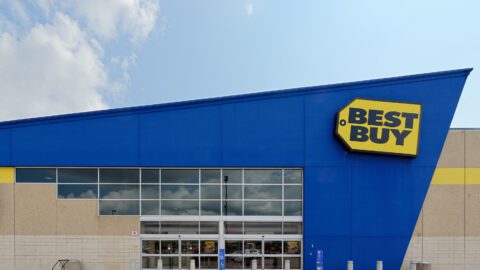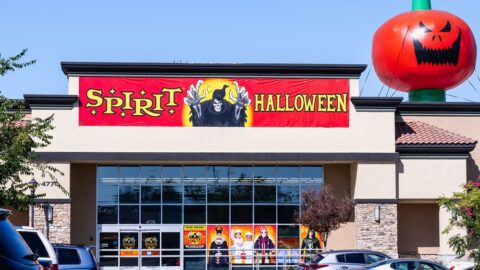Shoppers today don’t just want the right products at the right price at the right time. They want to be immersed into content and experiences that align with their wants, needs and expectations. Marta Dalton has developed an illustrious career in ecommerce helping brands provide those personalized experiences.
Prior to her current role as VP of Data Analytics & Customer Insights at Amyris, a biology company in the clean beauty, health and wellness and flavors/fragrances markets, she held ecommerce and digital marketing roles at brands like Coca-Cola and Unilever. During a deep-dive presentation during the Retail Innovation Conference & Expo, Dalton shared some metrics that reaffirm just how crucial segmentation is as retailers strive to acquire and retain customers. For example:
- Personalized emails drive a 6X higher transaction rate over generic emails;
- Personalization can deliver 5X to 8X the ROI on marketing spend; and
- 53% of consumers say it’s important that retailers recognize them as the same person across all channels and the devices they use to shop.
“In ecommerce, [segmentation] supports a direct equation for revenue, and revenue equals number of sessions times your average order value times your conversion rate,” Dalton said. “If you can increase any of these three things, you can directly increase your revenue.”
To drive this bottom-line impact, marketing teams can implement the six common types of segmentation:
- Geographic segmentation, which divides customers into groups based on their location;
- Demographic segmentation, which separates customers based on census data;
- Psychographic segmentation, which groups customers based on personal interests and motivations;
- Behavioral segmentation, which categorizes people based on what they do online and offline;
- Persona segmentation, which divides people based on blended data and customer goals; and
- Predictive segmentation, which uses historical behavioral patterns to predict and influence future customer behaviors.
While geographic and demographic segmentation have been core to marketing, psychographic and behavioral segmentation provide greater context into what consumers do and why. “What’s fascinating about psychographics specifically is that you can have a someone who’s in their 60s, who lives in Florida, that has a background in mechanical and they have the exact same behavior as someone who might be in their 20s and is a surfer in California,” Dalton explained. “It’s not dependent upon where you were born or what you do — it’s all about the way you react to technology or your lifestyle.”
Collecting data and segmenting customers is becoming critically important as marketers prepare for the cookie-less world: brands and retailers can take all the data they have about customers and use it to personalize site experiences and emails, as well as marketing and advertising tactics beyond branded channels. In fact, brands and retailers can either direct customers directly or create lookalike audiences to target people outside of their current customer base, Dalton noted. “If you’re on Amazon, Facebook or Google, having this information is extremely valuable to make the best use of your advertising money.
How Unilever Harnessed the Power of Microsegments
During her time at the CPG giant Unilever, Dalton helped develop a pilot study in southeast Asia, which included the Philippines, Thailand and Indonesia, to understand the impact of microsegmentation. Consumers were placed based on their purchasing patterns and overall frequency of engagement in the following phases of a pyramid:
- Acquisition: New users who have signed up for an account;
- Adoption: “Sticky” customers who are starting to engage with the brand and make purchases online;
- Retention: Customers who order online consistently; and
- Loyalty: Shoppers who have become stable and brand advocates. For Unilever, Dalton looked at purchase frequency over a six-month period to determine this.
Within each of these phases were guidelines for purchase frequency — something that varies by company. For Unilever, Dalton considered the refill rate for a specific part of the business, so she encouraged attendees to consider the unique attributes of the business and likely purchase cycles. She did note, however, that seasonality is something to consider.
“Statistically speaking, if I can get somebody past a third order, I had an 80% confidence level that they were going to continue purchasing with me,” Delton said. “These are the customers that had the higher average lifetime value. If I find that segment, I can spend a lot of time and effort getting them over that third order hump with a progressive discount. If I can cement that behavior and my brand with them, then I would get that better value out of that customer.”
The overall goal was to implement a lifecycle model that included cohorts that reflected consumer behaviors. These insights helped the marketing team better understand purchase behaviors and overall churn risk and implement key actions to drive business outcomes. Then, these customers were broken into segments: Loyalists, Nurturers, Underperformers, Faders, Win-backs, 1&2 Buyers, Churned and Uninstalled.
“I have my customers here where I’m in this phase of ‘retain and nurture’ versus ‘re-engage and reactivate,’” Dalton explained. “Re-engage means I want to get your attention — it doesn’t necessarily mean I need you to make a purchase. It means I want you to visit my site on a regular basis, and while I do want you to make a purchase ultimately, I mainly just want to be top of mind as we move forward with our campaigns. It’s so easy to find your one-and-done or two-and-done consumers in a data set.”
Then, the team looked at more than 60 variables across ERP and analytics, to understand products per order, number of sessions and other metrics, and mapped this data to understand consumers’ loyalty score, or value, and their overall risk score, or likelihood to leave the brand.
For the pilot, Dalton and her team developed a test group and a control group. Dalton noted that global businesses should structure segments by country, not on a global basis, because device usage, internet access and other behaviors vary significantly by country. Through microsegmentation, Dalton and her team were able to see:
- A 20% increase in purchase frequency;
- A 19% increase in repeat rate; and
- An 8% increase in active rate.
After the pilot, Dalton was able to make the case for microsegmentation, and get the necessary funds to implement the right people, processes and technology to support it.















